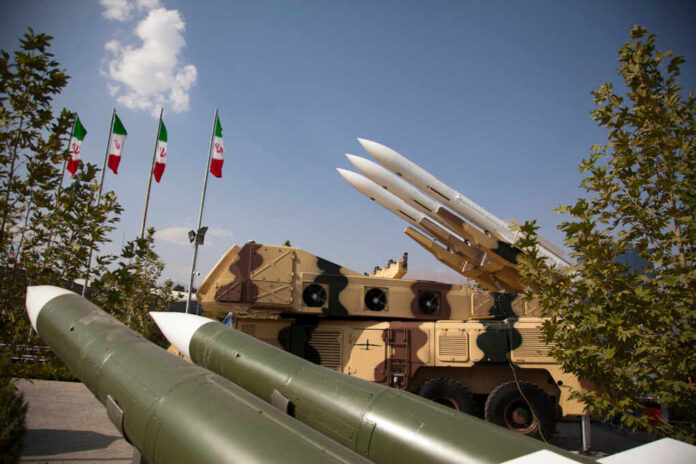
Iran’s military ranks show signs of fracturing amid devastating Israeli strikes that killed top commanders and targeted nuclear facilities, according to retired U.S. Army Col. John Mills.
At a Glance
- Israel’s massive air campaign targeted approximately 100 Iranian sites, including key nuclear facilities and military installations
- The precision strikes killed three top Iranian military leaders, significantly destabilizing the command structure
- Col. John Mills suggests growing discontent within Iranian military ranks could potentially lead to internal coups
- Iranian retaliation was limited to drone attacks that Israel claims were intercepted outside its airspace
- The operation has heightened regional tensions while potentially weakening the Iranian regime’s grip on power
Israel’s Devastating Precision Strike Campaign
Israel launched a significant military operation against Iran involving approximately 200 aircraft targeting some 100 strategic sites across the country. The comprehensive assault specifically targeted Iran’s nuclear infrastructure, including the critical uranium enrichment facility at Natanz, alongside military installations vital to Iran’s defense capabilities. The attack represented one of the most extensive military actions against Iranian territory in recent history and came following a censure of Iran by the United Nations’ atomic watchdog for non-compliance with nuclear obligations.
The strikes were meticulously planned not just to damage infrastructure but to decapitate military leadership. Three top Iranian military commanders were confirmed killed in the operation, severely hampering Iran’s command and control capabilities at a critical moment. Israeli Prime Minister Benjamin Netanyahu justified the attack as a necessary measure to prevent Iran from developing nuclear weapons, while also expressing hope that the strikes might contribute to the eventual downfall of Iran’s theocratic regime.
Military Instability and Potential for Coups
Retired U.S. Army Col. John Mills, speaking on Newsmax, provided critical analysis of the current situation within Iran’s military ranks following the Israeli attacks. Mills painted a portrait of an Iranian society and military increasingly frustrated with the oppressive tactics employed by the regime since the Islamic Revolution of the late 1970s. This mounting discontent, coupled with the elimination of key leadership figures, has created a dangerous power vacuum and potentially fertile ground for internal military challenges to the existing power structure.
The loss of experienced commanders has reportedly thrown Iranian military planning into disarray, with Mills suggesting that mid-level officers may be questioning the competence and decision-making of the surviving leadership. This internal fracturing comes at a particularly vulnerable moment for the regime, which has faced growing domestic protests in recent years and now must contend with the humiliation of being unable to protect its most sensitive military and nuclear assets from foreign attack.
Limited Iranian Response and International Reaction
Iran’s immediate response to the Israeli strikes was notably restrained compared to the scale of the attack it suffered. Tehran launched over 100 drones toward Israel, but according to Israeli military sources, these were intercepted outside Israeli airspace before they could cause significant damage. This muted response may reflect Iran’s diminished operational capacity following the loss of key commanders, or potentially indicate internal disagreement about the appropriate level of retaliation.
The international community has called for de-escalation, with Iran requesting an emergency United Nations Security Council meeting to address the situation. The United States confirmed it was not involved in planning or executing the attack, though it had been informed in advance and took precautionary measures, including evacuating some diplomats and repositioning military assets in the Middle East. U.S. officials also issued explicit warnings against any Iranian retaliation that might target American interests in the region.
Regional Implications and Future Scenarios
The Israeli operation has significantly altered the regional security calculus, with potential long-term consequences for Middle Eastern stability. Notably, Hezbollah, Iran’s primary proxy force in Lebanon, condemned the attacks but did not immediately threaten retaliation, suggesting possible hesitation about escalating the conflict further. The attack has also diverted international attention away from Israel’s ongoing military operations in Gaza, with Israeli public opinion broadly supportive of the strikes against Iran.
President Donald Trump urged Iran to negotiate on its nuclear program, warning that failure to do so could result in even more devastating attacks. Meanwhile, the International Atomic Energy Agency confirmed that the Natanz facility was hit and has been monitoring radiation levels in the aftermath. For ordinary Iranians, the successful penetration of their country’s air defenses and the targeting of supposedly secure facilities has raised serious questions about the regime’s ability to protect national sovereignty, potentially accelerating the internal dissent that Col. Mills identified as a precursor to possible military coups or governance changes.

























